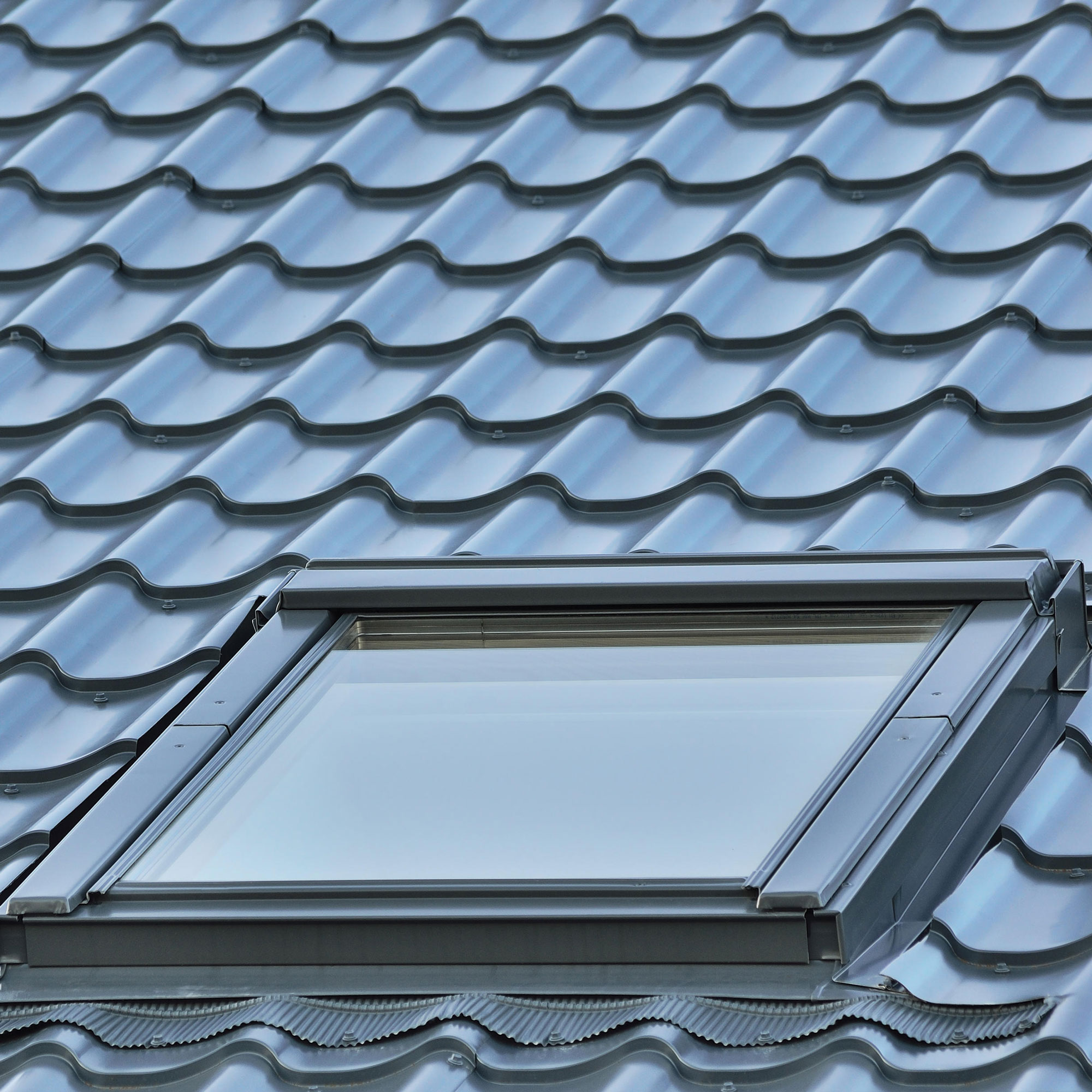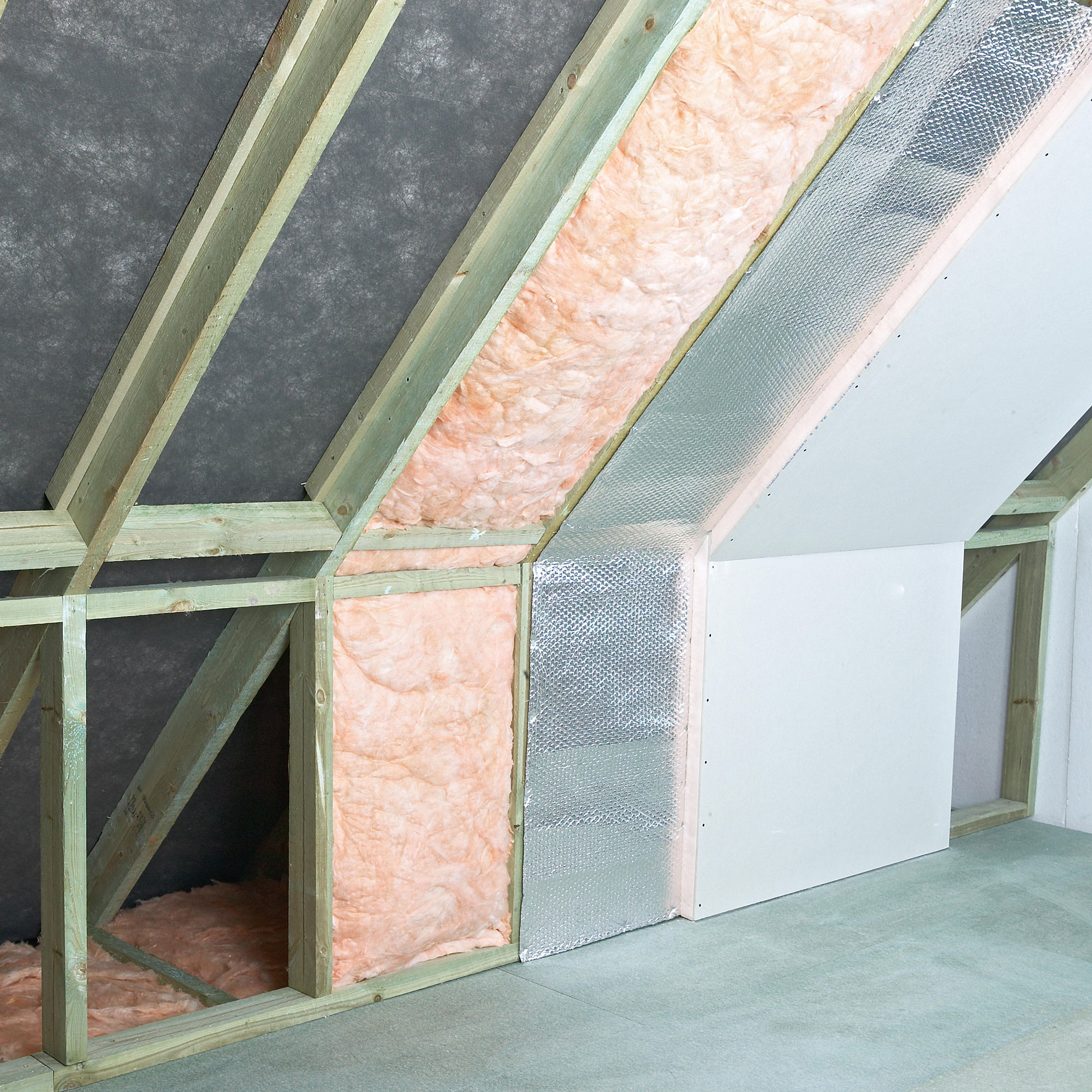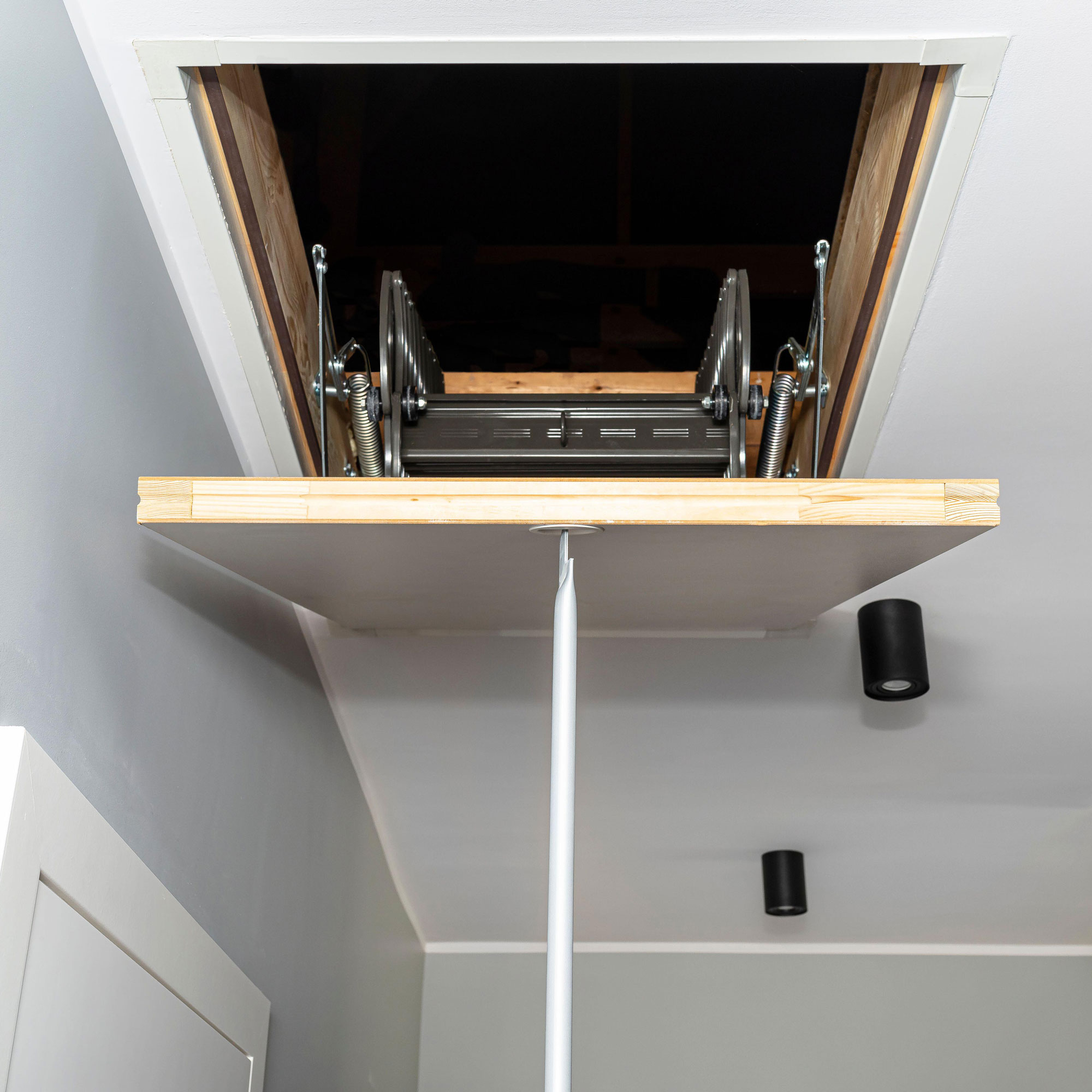A guide to roof and loft insulation for a warmer home
Know the benefits, types and maintenance of loft insulation to increase your home’s energy efficiency and cut energy bills

With energy prices through the roof, quite literally, now is an opportune time to invest in the fabric of your home by installing loft insulation. While the energy price cap is set to lower to £2,074 in July 2023 (for context it peaked at £4,279 in January 2023), utility bills are still very high, and many of us are struggling. Now's the right time to investigate how to insulate your home.
According to the Energy Saving Trust, if installed correctly roof insulation will, on average, cost £590 to insulate the loft of a mid-terrace house. However that initial outlay should pay for itself many times over in its 40-year lifetime. in fact, in that same housing type you'd be saving an average of £330 in energy bills per year.
The government has offered loft insulation grants to help cover the cost of installing loft insulation. ‘As heat from our heating systems rises, it escapes through the roof,’ explains Matthew Jenkins, heating and insulation expert at MyJobQuote.co.uk. ‘Loft insulation can retain this heat, helping to significantly lower heating bills,’ he says.
What are the benefits of roof and loft insulation?
Installing loft insulation helps with keeping your home warm and reduces overall energy usage. It can also protect your home from damage, too.
‘As well as keeping the warmth in, loft insulation helps to combat the build-up of condensation and dampness that typically follows,' says Gian-Carlo Grossi, managing director at Roofing Megastore. 'This is crucial if you want to protect the framework of your roof as well as the items you may store within it.'

You’ll also be doing your bit for the environment, currently 14% of all carbon emissions come from heating draughty houses. Plus, installing loft insulation will help to reduce noise pollution in your home – great if you have noisy neighbours or your home is next to a busy road.
What’s more, installing loft insulation will boost your home’s Energy Performance Certificate and potential value. That's a huge plus for potential buyers if you are thinking of selling your home in the future. It's also worth weighing up loft insulation cost and if it is worth it.
Get the Ideal Home Newsletter
Sign up to our newsletter for style and decor inspiration, house makeovers, project advice and more.
What types of roof and loft insulation are there?
We give you the low-down on what's available:
1. Glass mineral wool
This type of insulation is made from fibreglass and used for blanket insulation. Glass is heated to a high temperature and then, once melted, is spun quickly to create fibres. It’s great for fitting between the flooring joists in a loft.
2. Mineral wool
Made from a selection of raw materials, such as stone and glass, they’re treated in the same way as glass mineral wool, in that they are heated to high temperatures and once melted are spun to form fibres. Like glass mineral, it's used to form blanket insulation and ideal for fitting between the flooring joists in a loft.
3. Cellulose fibre
This is made from recycled paper fibres and is a type of loose-fill insulation and one of its benefits is it is light-weight. It’s typically blown into position – great for getting into nooks and crannies. It’s great for topping up existing blanket insulation in a loft.
4. Sheet insulation
A form of rigid insulation, there are three main types PIR/PUR boards, Phenolic boards and EPS boards. What’s great is that it comes in sheets of various sizes and depths. These are ideal for insulating the sloping roofs of a loft – perfect for loft conversions.
5. Reflective foil insulation
Sold in sheets or rolls, this is made up of thin rolls of aluminium foil alternated with layers of foam padding. It offers good insulation levels even though the material’s depth is thinner than other material options.
‘As well as serving as a thermal insulator and a barrier to radiant heat, the foil also reflects heat, so warm air stays inside (or outside in the summer),’ says William Bown, director at SuperFoil Insulation. ‘It's also resistant to water vapour, which can ruin the performance of other insulation types by either acting as a thermal conductor or enabling the growth of mould and fungus which reduces lifespan,’ he says.
6. Sheep wool
Sheep's wool insulation is free of nasty chemicals whilst still providing superb thermal efficiency. ‘It’s made from natural materials which prevents chemicals entering the environment during or after its use,' says Gian-Carlo from Roofing Megastore. 'Plus it’s far less itchy to handle during installation compared with man-made fibres.'
Sheep wool is ideal for insulating between joists in a roof or between the sloping timbers in a roof space.
7. Natural products
There are other insulation materials, such as Thermo-Hemp, on the market. Thermo-hemp is made from hemp and manufactured in an environmentally sensitive way using no pesticides or chemicals and can be installed between the rafters and joists to insulate roofs and lofts.
How much loft insulation do I need?

How much loft insulation you need will depend on the loft space and the type of insulation you choose to fit. A rule of thumb is that the thicker the insulation, the bigger the energy savings. Building Regulations state that blanket loft insulation in new-builds must meet a minimum depth of 270mm.
If you’re upgrading an older home’s roof insulation, you don’t technically have to conform to the rules, but it makes sense to increase it to 270mm, too. Whereas, a material such as multi-foil can achieve the same insulation benefits as blanket insulation but with a reduced depth of insulation. Always check with the manufacturer as to what depth of insulation you need to install.
Who supplies roof and loft insulation?
Some of the most well-known manufacturers of loft insulation are Knauf, Kingspan, Thermafleece, Warmcell, Ecotherm. Most manufacturers don’t sell their product direct to the public, so it’s best to purchase via an installer, local DIY shop or a builders’ merchant.
‘Remember to shop around, as many online stores can be up to 50 per cent cheaper than high-street retailers for the exact same product,’ says Gian-Carlo from Roofing Megastore.
Some manufacturers advise that their product is fitted by a qualified installer. If you go down that route, make sure whomever you choose to install is registered with an appropriate association, such as the Insulation Assurance Authority. This will give you the confidence that the insulation work is completed to the highest standards.
Expert tips for installing roof and loft insulation

If you decide to insulate a loft by yourself, you'll need to be aware of the following:
1. Always unwrap Mineral Wool insulation in the loft
‘Our Mineral Wool insulation is compressed to make it easier to store and transport (reducing road miles too),' says says Bradley Hirst, technical services manager at Knauf Insulation.
'However when you unwrap it, the Loft Roll insulation will recover to ten times the compressed thickness and will be impossible to get through a small loft hatch.'
2. Use a crawl board
‘To make sure you don’t compress the insulation and to reduce the risk of falling through the ceiling, use a crawl board that spans a minimum of three joists,' says Bradley from Knauf Insulation. 'Start at the point furthest away from the loft hatch and work towards it.'
3. Examine your home's existing insulation
There is a good chance that your home could benefit from an additional layer of insulation, especially if it's over ten years old.
'It doesn't matter how long the current insulation has been in the loft; it can be topped up at any age,’ says Matthew from MyJobQuote.co.uk.
4. Insulate your loft hatch
You also need to draught proof and insulate your loft hatch to reduce heat escaping through into the roof space as well as prevent condensation build-up.
5. Work in pairs
Although you can install loft insulation on your own, often it's easier if you have another pair of hands to help out.
Loft insulation can come in large rolls or sheets which can be difficult to manoeuvre on your own and it will also help avoid too much movement in the loft space, helping to reduce the risk of falling through the ceiling.
6. Wear the correct PPE
You need to take care when working with products which can release airborne fibres or particles, such as glass mineral wool. Wear the correct clothing, such as overalls and pick up PPE from Amazon or your local DIY store, including a face mask, safety glasses and a hat. These will help to avoid the risk of direct skin contact.
What maintenance is required for roof and loft insulation?
Thankfully, if installed properly, roof and loft insulation should require little, if no maintenance. ‘It’s worthwhile inspecting it regularly for dampness though and to ensure it hasn’t been compressed at all,’ advises Gian-Carlo from Roofing Megastore.
‘Both can significantly impact the insulation’s effectiveness and dampness could result in mould forming.’

Will I need to replace loft insulation?
How often your insulation needs replacing will vary from house to house and will depend on the quality of insulation installed. If you have loft insulation installed and still feel your home is chilly, Bradley from Knauf Insulation suggests going up to the loft to inspect the insulation. Check to see if it has been fitted correctly and make sure it isn’t damaged.
‘If the depth of insulation is inadequate, but it’s in good condition and has been installed correctly, you can simply lay some more over the top,' explains Bradley. 'But if it has been damaged or hasn’t been installed correctly, it’s best practice to replace it completely.'

Sophie Vening is a freelance journalist and editor with more than 16 years’ experience writing about homes and properties. She’s worked for some of the UK’s leading interiors, self-build and property titles including, Grand Designs, Ideal Home, House Beautiful, Build It, The Metro Homes & Property and The Evening Standard Homes & Property.
She enjoys writing about complex issues in an easy-to-understand way.
-
 Will a conservatory add value to your home and how can you maximise it?
Will a conservatory add value to your home and how can you maximise it?This is what the pros say
By Amy Reeves
-
 I’ve been looking for a new signature scent for my home and The White Company's new fragrance is the exact summer holiday smell I needed
I’ve been looking for a new signature scent for my home and The White Company's new fragrance is the exact summer holiday smell I neededSantorini smells fresh, summery and sophisticated
By Kezia Reynolds
-
 How to remove algae from garden walls in five steps – and the cleaning product experts rave about for tackling it fast
How to remove algae from garden walls in five steps – and the cleaning product experts rave about for tackling it fastExperts share their top tips for getting garden walls algae-free
By Katie Sims